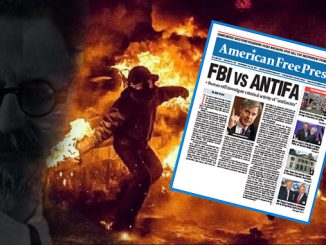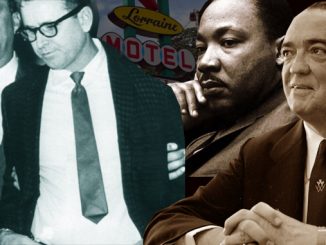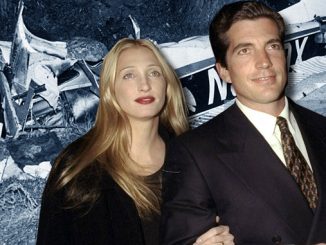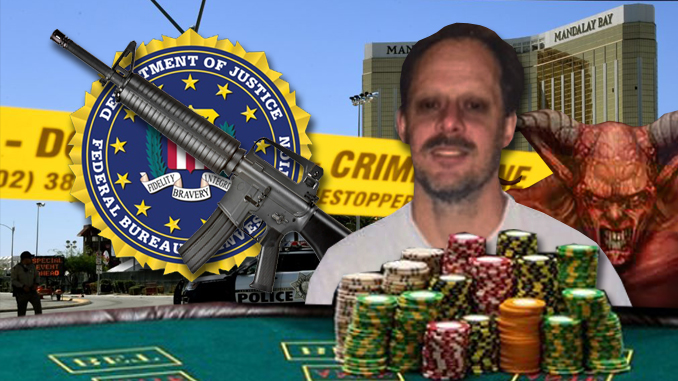
The FBI’s whopping three-page “official report” on the Las Vegas festival shootings in 2017 is vague and leaves way too many questions unanswered.
By S. T. Patrick
Almost a year-and-a-half after the Route 91 Harvest festival shootings on the grounds of Mandalay Bay Resort and Casino in Las Vegas, the FBI has finally released its first report on the events of Oct. 1, 2017. Totaling a paltry three pages in length, the report marked the first time—and the final time—the FBI has released or will release any documentation regarding Stephen Paddock, the alleged shooter, or the chaos surrounding the country music festival.
The FBI report featured 10 key findings that focused largely on pinning Paddock to the “lone nut” archetype and nixing any discussion of motive. According to the FBI, Paddock, 64, left no video, suicide note, or manifesto. He devoted his time and resources to planning and plotting the attack, and he took precautions that would ensure that he could commit suicide when and how he had planned.
Regarding Paddock’s motive, the FBI concluded that the shootings were not inspired by any ideologically motivated groups (e.g., neither international terrorism nor affiliation with any domestic group), there appeared to be no motivating factor or grievance that would explain his actions, he was not a loner, and he was in many ways similar to other “active shooters” studied by the FBI. To simplify even further, Paddock was a “lone nut” with no stated motivation that could be picked apart for decades by independent journalists.
Though the subject of motive was left murky at best, absent at worst, the FBI report did say that “Paddock’s decision to murder people while they were being entertained was consistent with his personality” and that his “intention to die by suicide was compounded by his desire for infamy.” The latter cannot be easily debated, for or against, because neither a “desire” nor “intention” can be proven or disproven without physical evidence. Debating the former can only be done by an in-depth study of Paddock’s psychology, which will eventually be done by the research communities. But even then, it’s inexplicable what it means that the entertainment of the concert-goers was one of the so-called key factors. There appears to be no evidence that Paddock was morally opposed to happiness, enjoyment, or fun.
The Las Vegas Metro Police Department has released it own, longer findings, yet critics have rightly been puzzled by metro’s periodic releases, as they usually include changes to the official timeline and rarely answer lingering questions.
Critics such as Mike Adams of the “Natural News” website question how or why one shooter could or would set up 10 rifles in one hotel room. This becomes even more questionable when it is considered that Paddock had no military background. The New York Daily News reported that Paddock’s brother, Eric, dismissed any notions of his brother as a “gun nut.”
Paddock was “not an avid gun guy at all,” brother Eric remarked.
The video evidence was clearly poorly shot in the bedlam of the moment, yet it appears to show no muzzle flashes from the 32nd floor, Paddock’s official location. The videos do show what could be flashes from a location near the fifth floor. The audio evidence is even more confusing to the official narrative, as it sounds, in places, as if two automatic weapons are firing simultaneously.
The ISIS angle is also suspect. Eric Paddock said his brother had no religious or organizational ties of any kind, yet ISIS claimed responsibility for the attack shortly thereafter. Within 12 hours of the shooting, the FBI had already declared that Paddock had no ties to ISIS. It was important—for reasons that remain unclear— that Paddock fit the role of “lone nut.”
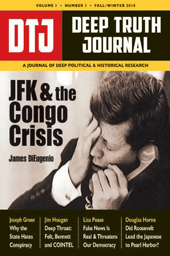
There are a lot of rumors, speculation, and bits of evidence that continue to go unexplained: One photo of Paddock’s room appears to show a suicide note, there was early official discussion of another suspect on the fourth floor, some have pointed out that 573 injuries or deaths are a near-impossibility by a barely proficient lone gunman in the time allotted, a woman was telling concertgoers 45 minutes before the attacks that they were all going to die, why it took 72 minutes to enter Paddock’s room, why Paddock’s adult life was so transient (he is said to have moved 27 times), and why Paddock’s gambling habit was so well-funded. How did Paddock continue to have an influx of funds throughout the end of his life? And did he ever fly helicopters for the Saudi royals?
There were also reports of shots heard in other hotels along South Las Vegas Boulevard, also known as “The Strip.” These reports seemed credible and not misreported. Why were they all but ignored by the mainstream media?
The Las Vegas Review-Journal quoted Las Vegas resident Mynda Smith in its story on the FBI report. While America’s leading domestic law enforcement agency reported next to nothing on the nation’s largest mass murder, Smith’s opinion was included to remind us that none of it mattered as long as Paddock was dead.
“We’d much rather [Paddock] be gone and be answerless than for him to be here and to have all the answers,” Smith was quoted as saying.
That’s part of the media deception. Make the public feel the emotional side of the story and condition them to hate the alleged killer. Then, when that is accomplished, teach the public that real answers are insignificant when compared to moral vengeance. It is then that we de-intellectualize the case and dumb down the facts to fit the emotions, which the media can further control.
S.T. Patrick holds degrees in both journalism and social studies education. He spent 10 years as an educator and now hosts the “Midnight Writer News Show.” His email is [email protected].


